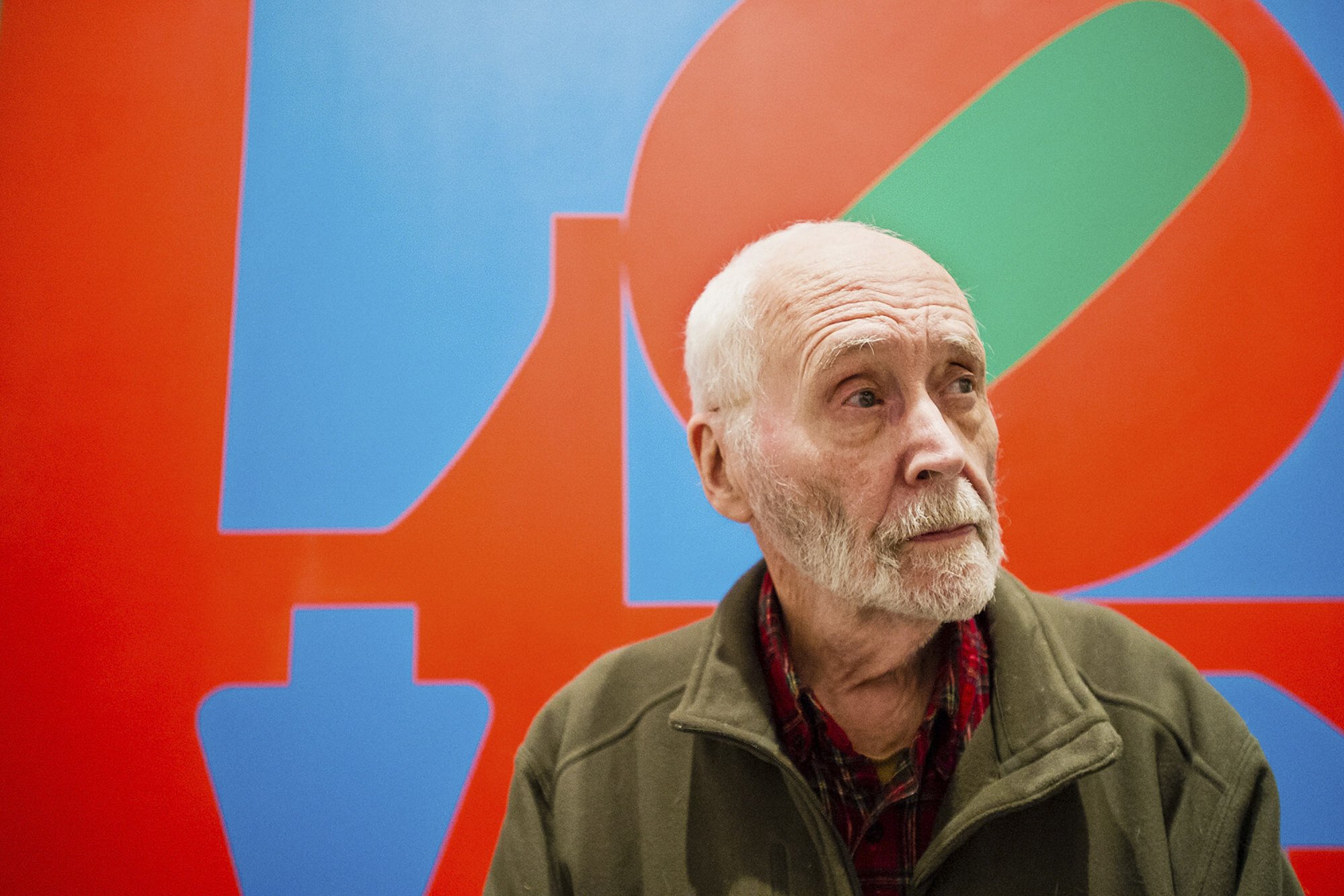
The origins of love: how the word permeated languages and cultures, and the pop artist who wrote it across the US
- Where does love come from? It spread to languages including Sanskrit, Latin, Hebrew and modern European tongues from a proto-Indo-European root
- Pop artist Robert Indiana appropriated it for his LOVE installations, which grew from a Christmas card design for the Museum of Modern Art
In the history of language, the Modern English “love” evolved from the Old English lufu, which encapsulated a range of meanings – sexual attraction, affection, friendliness, the love of God, love as an abstraction or personification. The word descended from Proto-Germanic, with cognates in other Germanic languages, such as the German liebe.
Its ultimate origin is the Proto-Indo-European root leubh- “to care, desire, love” – the same source as for words including the Sanskrit lubhyati “desires” and the Latin libido “desire, longing, sensual passion, lust”.
In the history of art, the concept of love has been a prominent theme. And in the 20th century, the most iconic rendition of love is surely American pop artist Robert Indiana’s LOVE. Crucially, in his work – which Indiana himself described as “verbal-visual” – the meaning of the word is reflected in its typography.
The bold seriffed contours (and, in the original, the brilliant contrast of colours) convey a certain intensity. The four letters in upper case are stacked in a square format (a quadripartite composition), the letters touching one another in physical intimacy. And the O swoons at an angle to the right – as if knocked off balance, swept off its feet, thus evoking strong feelings of passion.

Originally designed for personal use, then commissioned as a print for a Museum of Modern Art Christmas card in 1965, the first LOVE sculpture was constructed in Indianapolis in 1970. Over the decades, more than 50 incarnations were produced by Indiana for urban centres across the Americas, Europe and Asia.
The language of LOVE extends beyond English: the sculpture can be found as the Hebrew אהבה (AHAVA), and the Spanish and Italian amor. Also created were a love/eros/amour/liebe/ahava construction and a series of paintings of the Chinese character 爱 “love”. Different types of love were explored in Indiana’s Lust Family Portrait (AMOR, LOVE, EROS, LUST).
In the consumer culture of late-capitalist societies, symbolic resources such as language become commodified, and acquire prominence as cultural and material artefacts. Text-based artworks, such as Indiana’s LOVE, and other non-utilitarian decorative items, such as “love” photo frames, jewellery and fridge magnets, are termed “language objects” by University of Hong Kong language and communication professor Adam Jaworski.
These objects allow consumers to appropriate the word’s meaning potential and create an individual, intimate experience.
In whatever language or multimodal representation you experience it this Valentine’s Day, let there be love!

